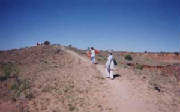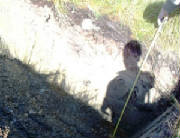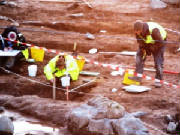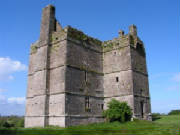|
|
|
|
|
|
The archaeological technique of Pedestrian Survey, also called surface
survey or reconnaissance survey, involves walking the surface of an archaeological site or large region in stratified patterns,
and either marking the location of identified artifacts, or collecting a sample for further investigation. The field method
is an established practice for providing data on settlements in large regions, and is usually considered one part of an investigation
strategy. |

|
Corridor Surveys
and Monitoring
|
Corridor Surveys and Monitoring determines
the possible presence of archaeological remains within a given area. |
|
|
|
Archaeological Testing, determines
the nature and extent of any archaeological remains on site before groundwork commence. |

|
|
|
Excavation is the time-honoured archaeological tool for understanding
the processes of the human past, and it certainly represents the type of activity that most people attribute to archaeology.
As a definition, excavation is simply the controlled exploration of what lies below the surface, usually carried out systematically
in gridded trenches with shovel and trowel. Through the process of excavation, archaeologists look backwards into time, examining
an area at discrete temporal periods. |

|
Architectural and Building Surveys |
An architectural and building survey is an analysis of different chronological
stages and hypothetical theories of a building. A building assessment focuses on a specific building or group of buildings,
defining its/their architectural or historic interest, and thereby indicating which elements of a building are more and less
sensitive to alteration.
|

|